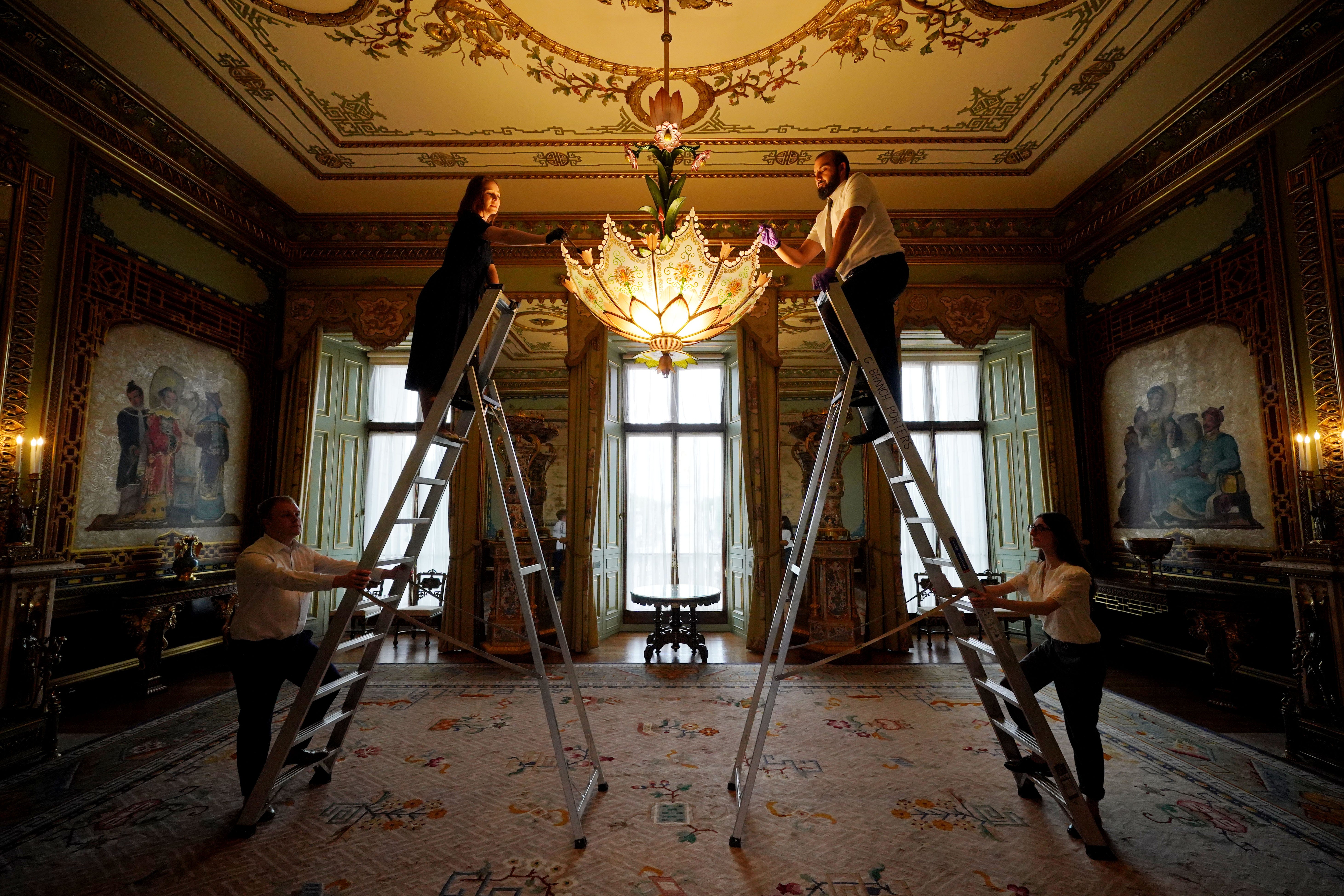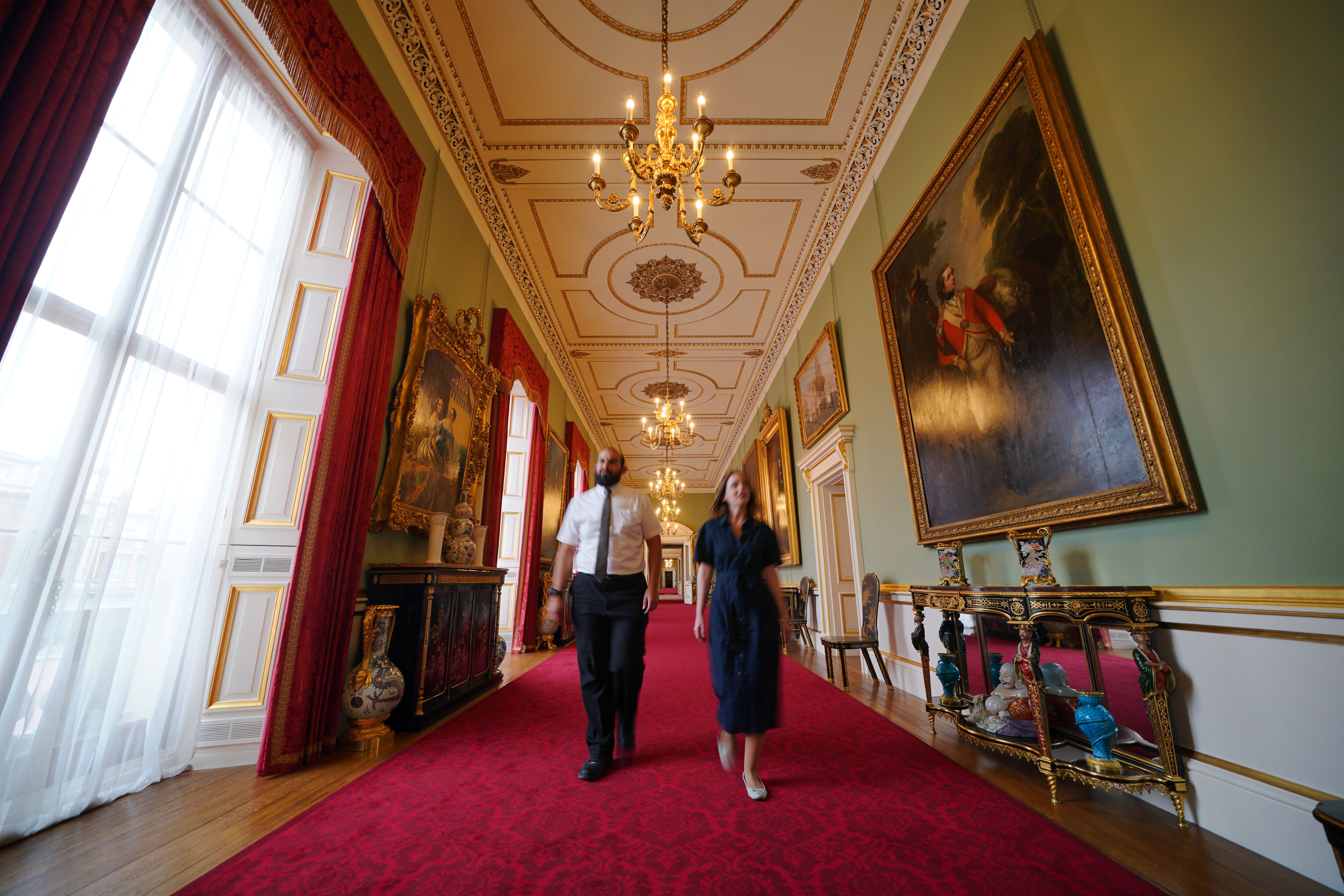Buckingham Palace renovation spend tops £239m amid asbestos discovery
Asbestos and historic structural damage amongst unforeseen discoveries that ‘slowed progress’
Structural damage and the discovery of asbestos at Buckingham Palace “could have been foreseen”, according to a new report which said that two-thirds of its £369m renovation budgethas already been spent.
Large-scale repair work on the 18th century palace was launched in 2017 to update the plumbing, pipes, wires and heating, some of which dated back to the 1940s and 1950s.
A further £100m is set to be spent on the repair programme in the next two years.
With 775 rooms in the palace, including 52 royal and guest bedrooms, 188 staff bedrooms, 78 bathrooms and 92 offices, the renovation project has presented a costly challenge.
While the overall programme remains within budget, The National Audit Office (NAO) report found that some individual projects have increased in cost and have taken longer to complete than expected.
Some of the reasons for cost increases and delays were outside the household’s control, for example COVID-19, variable inflation, and supply chain difficulties,” the report states.
“Other challenges, such as the discovery of more asbestos and structural damage than expected – common in heritage programmes – could have been foreseen.”
The newly-opened East Wing was completed over two years later than planned, and at March 2024 was 78 percent over its estimated cost. Other projects have come in under budget, such as the Picture Gallery and roof being 25 per cent under its forecast cost.

So far, 3.5km of dangerous wiring, new boilers, lavatories, lifts and an accessible entrance ramp are among the improvements made.
Sound planning and project management has enabled the programme to remain within budget to date and respond well to challenges such as the pandemic,” Gareth Davies, the head of the NAO said.
“The Household worked hard to engage stakeholders and the Palace has remained operational throughout. There are plenty of important lessons here for heritage projects and those taking place in a live environment.
While risks remain as the programme draws to a close, if these continue to be managed effectively the result should represent good value for money.”

The report added that asbestos had also been discovered in other areas too, further affecting projects.
The household also found incidents of “historic damage” in the palace, with significant damage to joists and jack arches. These repairs have amounted to £3.1m, according to the report.

The Covid-19 pandemic also hit the programme, with the Royal Household estimating resulted in a £22.5m total cost.
Despite some hurdles, the project is still expected to come in £1.6m under budget with the worst case scenario being £5.9m overspend and the best an £8.3m underspend.
The NAO’s report, released on Tuesday, said works on essential services and the West Wing, as well as the North and South Wings which are yet to begin main works, are to be completed over the next three years.
The report said to “reduce dependencies between projects” works would be carried out on the North and South Wings at the same time, adding that there was “a risk that there is not enough capacity in the palace’s in-house programme management office (PMO) to manage this”.
The PMO estimated that 11 per cent of the total budget – £40.8m – will be spent on management costs, the NAO said.
The project will spent £100m in its last two years and expects to spend £51.5m in the final year of the programme.


